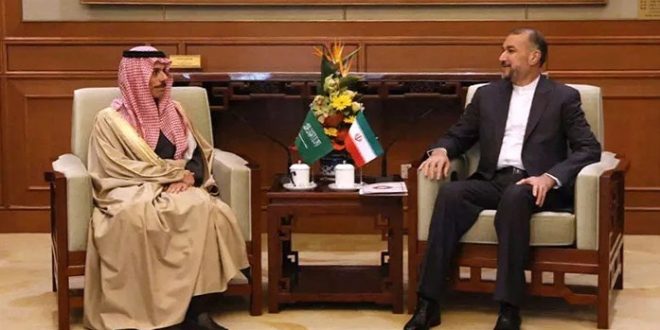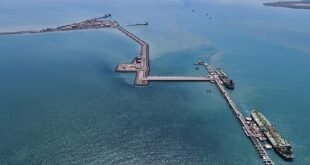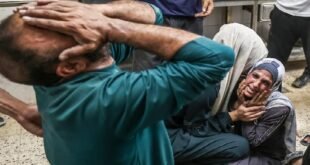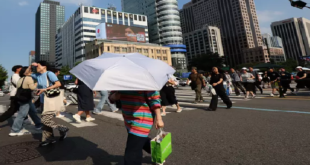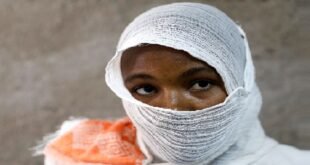09-04-2023
TEHRAN: A Saudi delegation arrived in Tehran on Saturday to discuss reopening diplomatic missions with Iran after seven years.
The visit comes two days after the unprecedented meeting between Iran and Saudi Arabia’s heads of diplomacy in China after the two countries agreed to restore diplomatic ties last month.
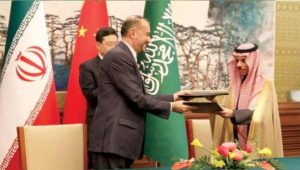 The minister called the visit part of “implementing the tripartite agreement” reached on 10 March between the two regional powers, brokered by China, to restore ties ruptured in 2016, according to the Saudi Press Agency (SPA).
The minister called the visit part of “implementing the tripartite agreement” reached on 10 March between the two regional powers, brokered by China, to restore ties ruptured in 2016, according to the Saudi Press Agency (SPA).
The two longtime Middle East rivals have now pledged to work together.
When Saudi’s foreign minister, Prince Faisal bin Farhan Al Saud, and his Iranian counterpart, Hossein Amir-Abdollahian, met in Beijing on Thursday they vowed to bring security and stability to the turbulent Gulf region.
“The two sides emphasized the importance of following up on the implementation of the Beijing Agreement and its activation in a way that expands mutual trust and the fields of cooperation and helps create security, stability and prosperity in the region,” a joint statement said.
On Saturday, a Saudi “technical delegation” met Iran’s chief of protocol, Mehdi Honardoust, at the foreign ministry in Tehran, SPA reported.
The two countries severed ties after protesters in Iran attacked Saudi diplomatic missions after Riyadh executed a prominent Shiite cleric.
 The shock rapprochement between mainly Sunni Muslim Saudi Arabia, the world’s biggest oil exporter, and Shiite-majority Iran, strongly at odds with western governments over its nuclear activities, has the potential to reshape relations across a region that has been characterized by turbulence for decades.
The shock rapprochement between mainly Sunni Muslim Saudi Arabia, the world’s biggest oil exporter, and Shiite-majority Iran, strongly at odds with western governments over its nuclear activities, has the potential to reshape relations across a region that has been characterized by turbulence for decades.
Under last month’s agreement, the two countries will reopen their embassies and missions within two months and implement security and economic cooperation deals signed more than 20 years ago.
The Iranian president, Ebrahim Raisi, has also been invited by the Saudi king, Salman bin Abdulaziz Al Saud, to Riyadh The trip is planned to take place after the holy fasting month of Ramadan, which ends on 21 April.
The US has for decades been the key diplomatic power in the Middle East and has an alliance, albeit a frequently strained one, with Saudi Arabia.
Washington has cautiously welcomed the rapprochement between Saudi Arabia and US adversary Iran despite China’s role, which it sees as its biggest global challenger.
Iran and Saudi Arabia vie for influence in Syria, Lebanon and Iraq.
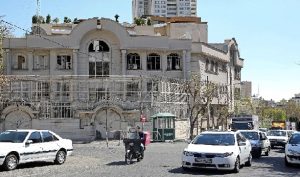 They also support rival sides in several conflict zones across the region, including in Yemen, where Houthi rebels are backed by Tehran and Riyadh leads a military coalition supporting the government.
They also support rival sides in several conflict zones across the region, including in Yemen, where Houthi rebels are backed by Tehran and Riyadh leads a military coalition supporting the government.
In a separate development on Saturday, Omani mediators arrived in the Yemeni capital Sana’a to discuss a new truce between the Iran-backed Houthi rebels and Saudi Arabia, an airport source said.
Diplomatic efforts to resolve the conflict have multiplied since the Chinese-brokered Saudi-Iran deal to restore relations.
Earlier, the Saudi and Iranian foreign ministers have met for the first time in seven years, weeks after the two countries came to an agreement, brokered by Chinese officials, to restore diplomatic relations.
Saudi Arabia’s Prince Faisal bin Farhan Al Saud and Iran’s Hossein Amir-Abdollahian met in Beijing to discuss the reopening of embassies, the appointment of ambassadors and a planned visit to Saudi Arabia by Ebrahim Raisi, Iran’s president. They also discussed resuming flights between the two countries and issuing travel visas for each other’s citizens. (Int’l News Desk)
 Pressmediaofindia
Pressmediaofindia
